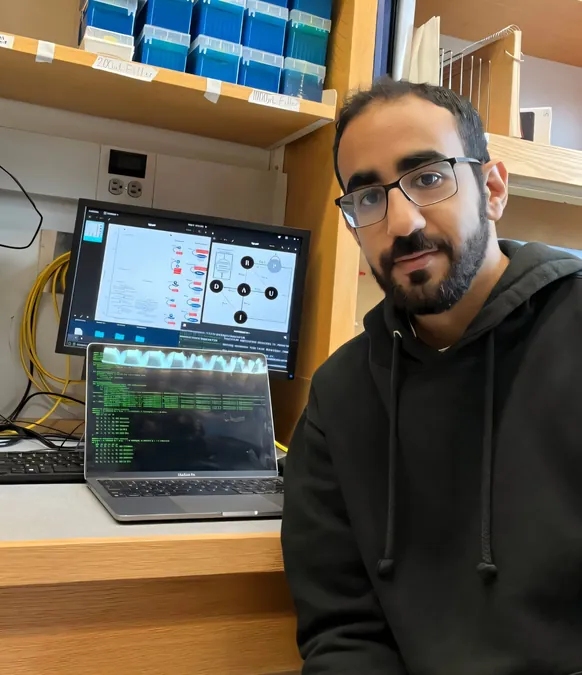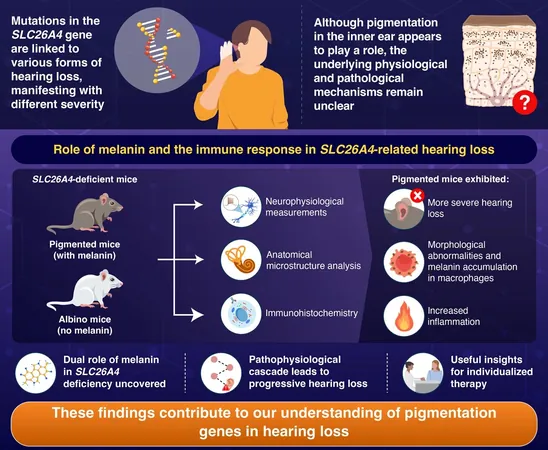
Unlocking Nature's Playbook: How Cells Defend Against Evolutionary Chaos
2025-06-13
Author: Ming
Cell Defense: The Football Analogy
Imagine a football team where the defense is key to thwarting the enemy's plays—this is akin to what happens inside our cells. Recent research from Vanderbilt University unveils the remarkable role of Negative Feedback Loops (NFLs) in cellular signaling, acting as molecular defenders that regulate cell responses.
The Groundbreaking Study
Led by postdoctoral researcher Danial Asgari and associate professor Ann Tate in the Tate Lab, their study, published in Molecular Biology and Evolution, reveals fascinating insights into how these molecular defenders evolve depending on their position within the cellular signaling pathway.
Where Evolution Takes a Stand
The study highlights that NFLs closer to a cell's decision-making nucleus—where genes are switched on or off—exhibit remarkable resistance to evolutionary changes. In contrast, NFLs located upstream, nearer the cell surface, are more susceptible to change, primarily influenced by external signals.
Predicting the Future of Feedback Loops
"Our model predicts that downstream NFLs are robustly preserved across various conditions, underscoring their vital role in gene regulation," Asgari noted. This aligns with existing observations showing that proteins related to downstream NFLs undergo slower evolutionary changes.
The Upstream Challenge
Conversely, the evolution of upstream NFLs demands precise conditions to align perfectly. Asgari expressed surprise at this finding, explaining that the degradation of signaling proteins catalyzes the evolutionary shift in these upstream loops.
Understanding Through Analogy
To simplify these complex concepts, Asgari compares it to an electric circuit: ‘An upstream negative feedback regulates the electricity flow, impacting how brightly an LED lights up. Meanwhile, a downstream loop directly controls the LED's brightness without altering the flow.’
Impact on Immune Systems and Disease Understanding
Tate emphasizes that this research is a crucial stride in comprehending how our immune systems balance cost and control. The pathway's topology, or the interconnections between molecular parts, plays a significant role in how signaling operates.
Implications for Medicine
"This study proposes that the selection strength reflected in our model correlates with evolutionary rates of NFL genes observed in actual animals," Tate remarked. She suggests that variations in immune gene evolution might stem more from pathway topology than previously perceived factors like host-parasite dynamics.
These revelations could hold the key to better understanding diseases and how multiple layers of feedback regulation contribute to this equilibrium. Tate warns, however, that before making clinical adjustments, it's crucial to decipher the role of each layer within distinct disease contexts.



 Brasil (PT)
Brasil (PT)
 Canada (EN)
Canada (EN)
 Chile (ES)
Chile (ES)
 Česko (CS)
Česko (CS)
 대한민국 (KO)
대한민국 (KO)
 España (ES)
España (ES)
 France (FR)
France (FR)
 Hong Kong (EN)
Hong Kong (EN)
 Italia (IT)
Italia (IT)
 日本 (JA)
日本 (JA)
 Magyarország (HU)
Magyarország (HU)
 Norge (NO)
Norge (NO)
 Polska (PL)
Polska (PL)
 Schweiz (DE)
Schweiz (DE)
 Singapore (EN)
Singapore (EN)
 Sverige (SV)
Sverige (SV)
 Suomi (FI)
Suomi (FI)
 Türkiye (TR)
Türkiye (TR)
 الإمارات العربية المتحدة (AR)
الإمارات العربية المتحدة (AR)